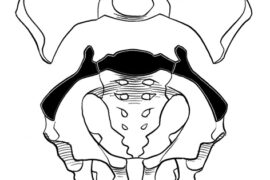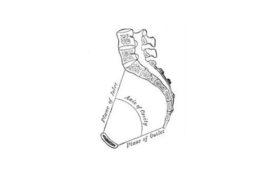Canadian guideline: All women without contraindication should be physically active throughout pregnancy
Interested in the benefits, indications and contraindications for physical activity throughout pregnancy? Please read the summary of findings from the Canadian guidelines for physical activity during pregnancy and follow the link.
Canadian guidelines: strong recommendations are summarized below.
All women without contraindication should be physically active throughout pregnancy. Moderate-quality evidence.
Women who were previously inactive. Moderate-quality evidence.
Women categorised as overweight or obese (prepregnancy body mass index ≥25 kg/m2). Low-quality evidence.
Pregnant women should accumulate at least 150 min of moderate-intensityiii physical activity each week to achieve clinically meaningful health benefits and reductions in pregnancy complications. Strong recommendation, moderate-quality evidence.
Physical activity should be accumulated over a minimum of 3 days per week; however, being active every day is encouraged. Moderate-quality evidence.
Pregnant women should incorporate a variety of aerobic and resistance training activities to achieve greater benefits. Adding yoga and/or gentle stretching may also be beneficial. High-quality evidence.
Physical activity during pregnancy decreases severity of LBP, PGP during and immediately after pregnancy, but odds of developing lumbar/pelvic pain are not reduced
Being physically active during pregnancy did not reduce the odds of developing low back, lumbopelvic of pelvic pain either during pregnancy or in the postpartum period, according to a recent systematic review by Davenport et al. (2019).
Physical activity in pregnancy, performed in various formats, decreased the severity of low back, pelvic and lumbopelvic pain during pregnancy and the early postpartum period.
More than half of pregnant women are on sick leave during pregnancy, most frequently reported cause is lumbopelvic pain. Facilitating job adjustments and exercise gym may prevent sick leave in late pregnancy
‘Facilitating job adjustments when required might keep more pregnant women in employment. Furthermore, pain locations in pelvic area, disability, lower education and being sick listed due to LPP in mid pregnancy are important risk factors for sick leave in late pregnancy.’
Running during pregnancy: higher rates assisted vaginal deliveries, no affect on gestational age or birthweight centile
‘Continuing to run during pregnancy does not appear to affect gestational age or birthweight centile, regardless of mean weekly distance or stage of pregnancy. Assisted vaginal delivery rates were higher in women who ran, possibly due to increased pelvic floor muscle tone. Randomised prospective analysis is necessary to further explore these findings’
Persistency and/or duration of pain symptoms and widespread pain are predictors of chronic pain
‘This study is unique as it is one of few long-term follow-up studies following women with PPGP of more than 11 years. The results show that spontaneous recovery with no recurrences is an unlikely scenario for a subgroup of women with PPGP. Persistency and/or duration of pain symptoms as well as widespread pain appear to be the strongest predictors of poor long-term outcome. Moreover, widespread pain is commonly associated with PPGP and may thus contribute to long-term sick leave and disability pension. A screening tool needs to be developed for the identification of women at risk of developing PPGP to enable early intervention.’
full text Bergström et al, 2017
Professional information and support can decrease and prevent negative impact of stress on maternal and fetal health
‘Psychological distress at the end of a full-term pregnancy and in the postpartum period occurs frequently and was associated mainly with stress experienced during pregnancy and parity. It is advisable to perform proper assessment of stress and significant psychological distress at the early stage of pregnancy and repeatedly later on until delivery. Information and support from professionals can help to decrease and prevent their negative impact on maternal and fetal health, as observed in the current evidence.’
Pelvic girdle pain influences COP anteroposterior length in the gait of pregnant women
‘Gait speed influenced COP displacement and velocity parameters, and gait velocity potentiated the effect of pregnancy on the different parameters. Pelvic girdle pain had an influence on COP anteroposterior length only. With COP parameters being only slightly modified by PGP, the gait of pregnant women with PGP was similar to that of healthy pregnant women but differed from that of nonpregnant women.’
Elastic tape decreases pain in pregnancy-related pelvic girdle pain
‘Elastic tape decreases pain in pregnancy-related pelvic girdle pain. Pelvic girdle pain deteriorates the quality of life for pregnant women.’
Stabilizing exercises may decrease pain during and after pregnancy
‘Six studies were identified as eligible with the inclusion and exclusion criteria. All studies evaluated the pain as an outcome measure. The evidence conflicted between the studies. Two studies showed that stabilizing exercises decrease pain and improve the quality of life for pregnant women when they are carried out on a regular basis. There is some limited evidence that stabilizing exercises decrease pain for postpartum women too. In summary, there is limited evidence for the clinician to conclude on the effectiveness of stabilizing exercises in treating pelvic girdle pain during pregnancy and the postpartum periods.’
Minimal invasive SIJ Fusion safe and effective
‘For patients with chronic LBP originating from the SIJ, minimally invasive SIJF with triangular titanium implants was safe and more effective than CM in relieving pain, reducing disability, and improving patient function and quality of life. Our findings will help to inform decisions regarding its use as a treatment option in this patient population.’
High rates of Lower Back and Pelvic Girdle pain in Nigeria
‘The incidence of LBPs and pelvic girdle pains was high and found to be 34.3% and 57.6%, respectively. Analgesics were used especially among those with severe pains. There was an incidental finding of urinary incontinence among pregnant women with complaints of low back/pelvic girdle pains. There was no statistically significant association between LBPs and maternal BMI.
Excessive contraction of the TrA is present during ASLR in long-lasting posterior pelvic girdle pain
‘Significant excessive contraction of the TrA is present during ASLR in patients with long-lasting pregnancy-related posterior PGP. The present findings do not support the idea that contraction of the TrA is decreased in long-lasting pregnancy-related PGP. This implies that there is no rationale for the prescription of exercises to enhance contraction of TrA in patients with long-lasting pregnancy-related PGP.’
Web-based discussion forums are potential resources that health professionals may find useful
‘The popularity of Web-based discussion forums among pregnant women suggests that this group needs additional sources of information and support to complement traditional consultations with the health professionals. The professionals need to recognize that pregnant women access Web-based discussion forums for support and information to increase their ability to take better health decisions for themselves. This is a potential resource that health professionals may find useful in consultations with pregnant women.’
PLBP/PGP needs to be addressed early in pregnancy to reduce both individual suffering and risk of chronicity
‘Most women did not report any sick leave or sought any healthcare due to PLBP/PGP the past 6 months at Q3. However, women with ‘continuous’ PLBP/PGP 14 months postpartum did report a higher prevalence and degree of sick leave and sought healthcare to a higher extent compared to women with ‘recurrent’ PLBP/PGP at Q3. Women with more pronounced symptoms might constitute a specific subgroup of patients with a less favourable long-term outcome, thus PLBP/PGP needs to be addressed early in pregnancy to reduce both individual suffering and the risk of transition into chronicity.’
Assessment of pain in the lumbopelvic area early in pregnancy and postpartum necessary to identify women with risk of long term pain
‘This unique long-term follow up of PGP highlights the importance of assessment of pain in the lumbopelvic area early in pregnancy and postpartum in order to identify women with risk of long term pain. One of 10 women with PGP in pregnancy has severe consequences up to 11 years later. They could be identified by number of positive pain provocation tests and experience of previous LBP. Access to evidence based treatments are important for individual and socioeconomic reasons.’
Good quality trials are needed to ascertain the most effective elements of postnatal exercise programs suited for LPP treatment
‘Our review indicates that only few randomised controlled trials have evaluated the effectiveness of exercise on LPP among postnatal women. There is also a great amount of variability across existing trials in the components of exercise programs, modes of delivery, follow up times and outcome measures. While there is some evidence to indicate the effectiveness of exercise for relieving LPP, further good quality trials are needed to ascertain the most effective elements of postnatal exercise programs suited for LPP treatment’
Drawing-in exercise leads to a small widening of the Intra Rectus Diastasis
‘Overall, there was a contrasting effect of the 2 exercises, with the abdominal crunch exercise consistently producing a significant narrowing of the IRD. In contrast, the drawing-in exercise generally led to a small widening of the IRD.’
Self-reported PGP, pain locations and clinical tests at GW30 do not lead to unfavourable clinical course postpartum
‘PGP prevalence remained unchanged from 12 weeks to one year postpartum (31-30%). Physical functioning (PF) and bodily pain(BP) scores improved markedly from Gravity Week 30 to 12 weeks postpartum, and marginally thereafter. The most afflicted women at GW30 experienced largest improvement.’ ‘PF and BP scores improved markedly from GW30 to 12 weeks postpartum, and marginally thereafter. Despite high PGP prevalence one year postpartum, most women recovered in terms of PF and BP scores. Unfavourable clinical course postpartum did not appear to depend on self-reported PGP, pain locations in the pelvis, or response to clinical tests at GW30.’
pain location combined with responses to P4 and ASLR tests are relevant when evaluating affliction in pregnant women with possible PGP
‘The objective of this cross-sectional study was to explore the associations between pain locations, responses to the posterior pelvic pain provocation (P4) test, responses to the active straight leg raise (ASLR) test and disability in late pregnancy. 283 women in gestation week 30 (mean age 31.3 years; 59% nullipara) completed a questionnaire (including pain drawing and Disability Rating Index, DRI). Women with PGP were more afflicted than the women with LBP and those without PGP. Highest DRI score was reported by women having combined symphysis pain and bilateral posterior pain. The multivariate analyses showed that results from P4 and ASLR contributed independently to DRI. Taken together, pain location combined with responses to P4 and ASLR tests are relevant when evaluating affliction in pregnant women with possible PGP.’











